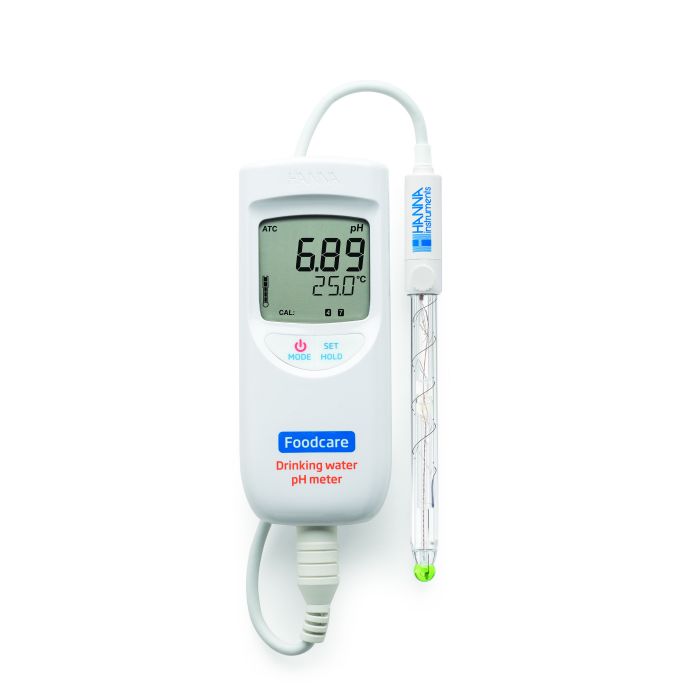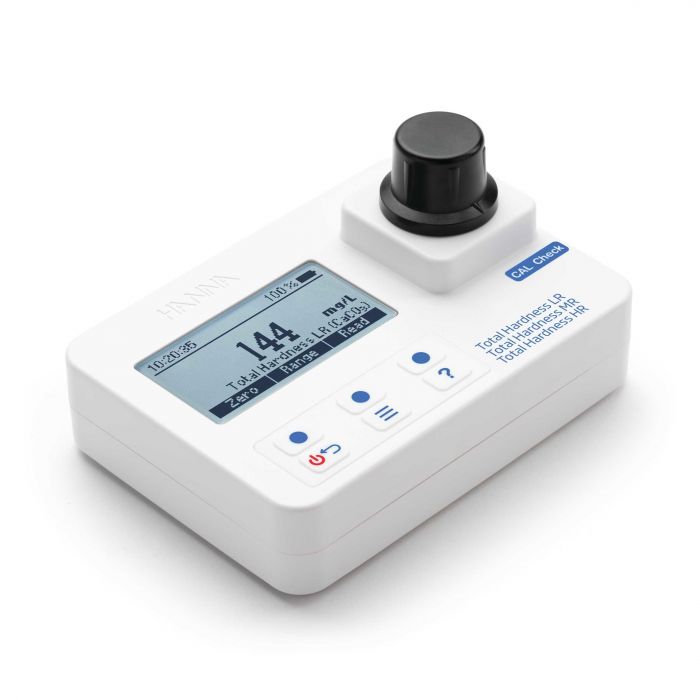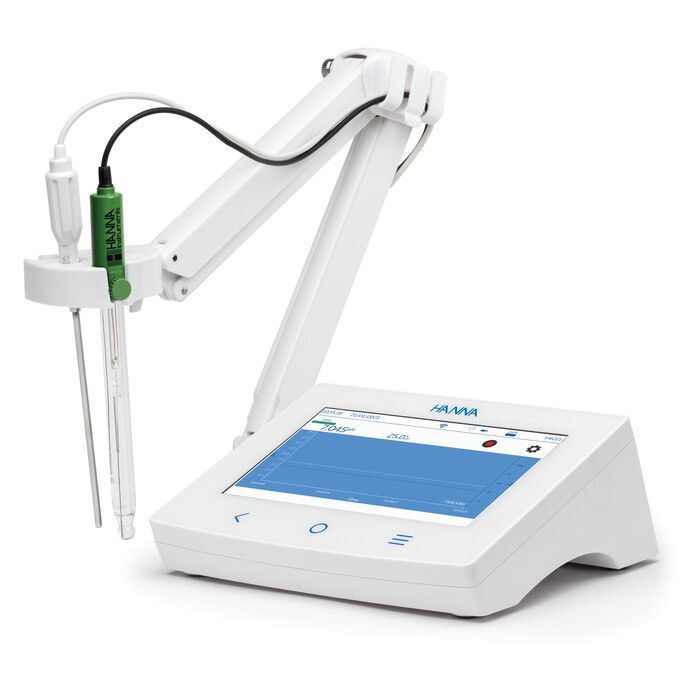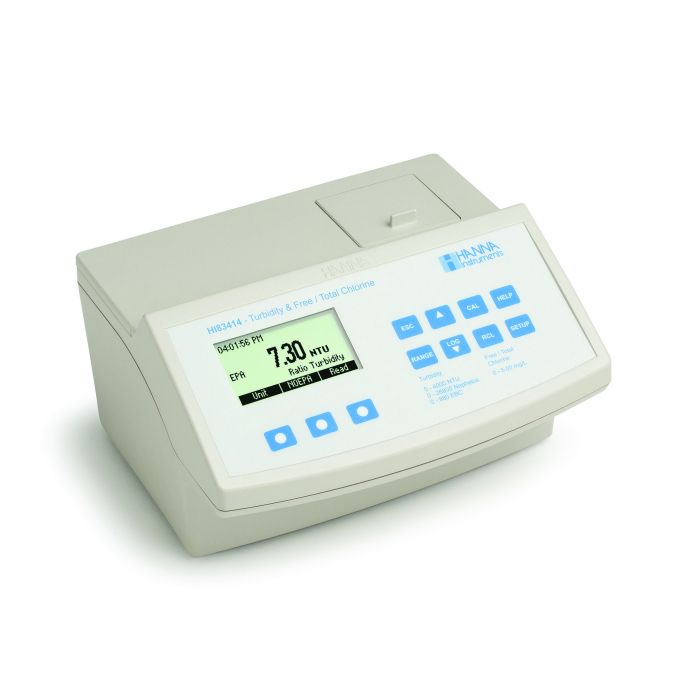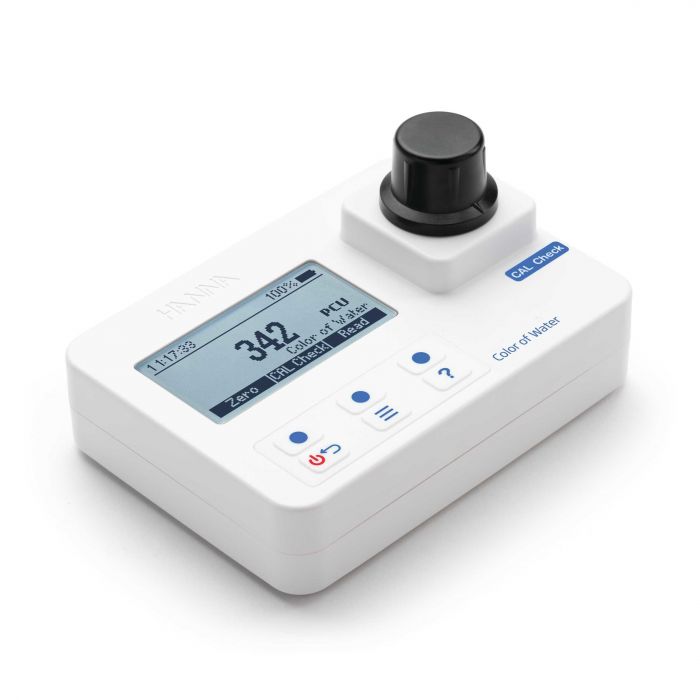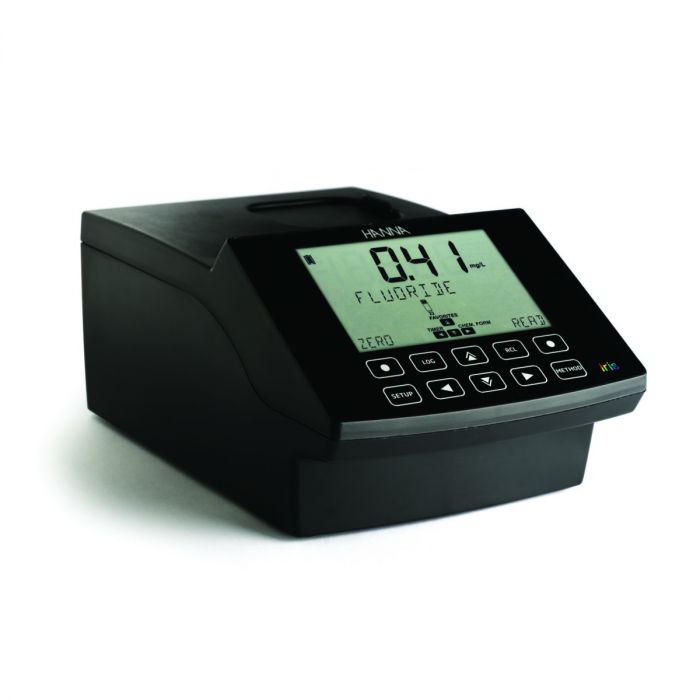Water quality is a vital aspect of human life, and as such, numerous bottling companies have emerged focused on providing clean and safe drinking water.
However, the quality of bottled water cannot be guaranteed without the monitoring of water parameters such as pH, conductivity/TDS, dissolved oxygen, ORP, and turbidity.
Hanna Instruments has made significant strides in providing cutting-edge technology for monitoring these parameters, ensuring the safety and quality of bottled water.
Importance of monitoring parameters in bottled water
What are water parameters?
Water quality parameters are the various physical, chemical, and biological characteristics of water that can be measured and monitored to determine its purity and fitness for use.
How do water parameters impact bottled water quality?
Water parameters are critical in determining the quality of bottled water. The chemical composition and physical properties of water can affect its taste, odor, and color, as well as its shelf life and safety. Measuring and monitoring water quality parameters is essential to ensure that bottled water meets regulatory requirements and consumer expectations.
Regulations on water parameters in bottled water
Regulations on water quality parameters in bottled water are set by national and international organizations, such as the US Food and Drug Administration (FDA) and the World Health Organization (WHO). These regulations set limits on certain water quality parameters, such as pH, conductivity, and TDS, to ensure bottled water is safe for consumption.
Why is pH important in bottled water?
The pH level of bottled water can affect its taste, odor, and appearance. pH also plays a critical role in determining the effectiveness of water treatment processes.
For example, if the pH is too low, disinfectants like chlorine may not be as effective. If the pH is too high, it can cause scaling and corrosion in pipes. pH has no direct adverse effect on health, however, according to WHO guidelines, the maximum desirable limit of pH is 7.0 – 8.5.
How to measure pH level with Hanna Instruments
HI99192
Drinking Water pH meter
Designed to bring simplicity to pH testing of drinking water, the HI99192 Drinking Water pH Meter is designed for measuring the pH of potable waters.
The specialized FC2153 probe features a glass body, spherical glass tip, and triple ceramic junction making it ideal for pH testing of drinking water and other low ionic strength liquids.
- ±0.2 pH accuracy
- Comes with all the necessary solutions and batteries – everything you need to get started measuring right away.
- Designed for measuring the pH of potable waters.
Conductivity/TDS and its impact on water quality
What is Conductivity/TDS?
Conductivity and total dissolved solids (TDS) are measures of the ability of water to conduct electricity. Conductivity measures the ability of water to conduct an electrical current, while TDS measures the amount of dissolved solids in a water sample.
How does Conductivity/TDS affect bottled water?
Conductivity and TDS can affect the taste, odor, and appearance of bottled water. High levels of conductivity or TDS can indicate the presence of impurities or contaminants in the water, which can make it unsafe for consumption. The maximum allowed concentration is 2500 µS/cm /20 °C.
How to measure Conductivity/TDS with Hanna Instruments
Hanna Instruments offers a range of conductivity meters and TDS meters, including portable and benchtop models. These meters use specialized probes to measure the conductivity or TDS of a water sample. Hanna’s conductivity and TDS meters are designed for accuracy, ease of use, and durability, making them ideal for water quality monitoring in a variety of settings.
HI6321
Advanced Conductivity Benchtop Meter
HI6321 is a streamlined Conductivity/Resistivity/TDS/Salinity/Temperature benchtop meter with a large touch screen display, comprised of a housing and an integrated conductivity measurement module.
Compact and easy to operate, the HI6321 includes Hanna’s HI7631233 four-ring conductivity/resistivity/TDS/salinity probe.
Recommended for a wide range of industrial process water applications, HI7631233 provides stable measurements over a wide measurement range and does not require frequent calibrations.
An integral temperature sensor measures the process temperature and adjusts the measured conductivity to a reference temperature by applying specialized compensation algorithms:
Recommended for a wide range of industrial process water applications, HI7631233 provides stable measurements over a wide measurement range and does not require frequent calibrations.
An integral temperature sensor measures the process temperature and adjusts the measured conductivity to a reference temperature by applying specialized compensation algorithms:
- Linear: appropriate when it is assumed that the temperature coefficient of variation has the same value for all measurement temperatures.
- Standard: appropriate for high-purity water measurements and documented in ASTM Standard D5391-14. This setting should be used for >1Mohm.cm resistivity measurements.
- Natural: appropriate for natural ground, well, or surface water (or water with similar composition) in accordance with ISO7888 standard.
The result is reliable electrolytic conductivity (EC), TDS (Total Dissolved Solids), resistivity, or Seawater Salinity in percent, psu, or ppt units.
Total hardness and its effect on bottled water
How does hardness affect bottled water?
The WHO limits hardness for drinking water between 100 – 500 mg/l. Hardness of water which is due to the presence of calcium and magnesium salts in water, does contribute towards total calcium and magnesium human dietary needs, which has a beneficial effect on bone structure. Studies on water hardness and cardiovascular disease mortality have suggested a lower incidence of heart disease in communities drinking hard water. Extremely hard water (hardness 4500 mg/l) is also unfit for consumption because the constituent minerals such as calcium can deposit inside the body if present in high amounts leading to kidney or gall bladder stones. Consumption of very soft water (less than 50 mg/l) lacking in essential minerals like calcium, magnesium and other trace minerals is also harmful for the body because water low in mineral content would rob off the body’s minerals.
How to measure total hardness with Hanna Instruments
HI97735
Total Hardness Portable Photometer
The HI97735 Total Hardness Photometer combines accuracy and ease of use in a simple, portable design. The advanced optical system provides lab-quality accuracy while its user-friendly design is easy for any user making it the perfect photometer for your water quality testing needs.
The HI97735 meter measures total hardness in water samples up to 750 mg/L (ppm) CaCO3.
- No warm up time needed before taking a measurement
- Tutorial mode for easy step-by-step instructions
- CAL Check for performance verification and calibration
Dissolved oxygen and its role in bottled water
What is dissolved oxygen?
Dissolved oxygen refers to the amount of molecular oxygen (O2) that is dissolved in a liquid. In bottled water, dissolved oxygen is essential for maintaining freshness and extending shelf life. Oxygen is necessary for the growth of beneficial microorganisms and it also plays a role in the oxidation of contaminants that may be present in the water.
How does dissolved oxygen affect bottled water?
Insufficient levels of dissolved oxygen can lead to the growth of harmful microorganisms and the accumulation of unpleasant odors and flavors in bottled water. Conversely, excessive levels of dissolved oxygen can lead to the oxidation and breakdown of important nutrients and other beneficial compounds.
How to measure dissolved oxygen with Hanna Instruments
Hanna Instruments offers a range of portable and benchtop dissolved oxygen meters that can accurately and efficiently measure the amount of dissolved oxygen present in bottled water. These instruments use a variety of measurement methods, including polarographic and optical sensors, to provide reliable and precise readings.
HI6421
Advanced Dissolved Oxygen Benchtop Meter with Optical DO Probe (opdo®)
HI6421 is a streamlined benchtop meter with a large touch screen display, comprised of a housing and an integrated module designed for fresh and saltwater measurements of dissolved oxygen.
HI6421 includes Hanna’s HI7641133 optical dissolved oxygen probe (opdo®) that is based on the principle of fluorescence quenching.
An immobilized Pt-based luminophore is excited by the light of a blue LED and emits a red light. As oxygen interacts with the luminophore it reduces the intensity and lifetime of the luminescence.
The lifetime of the luminescence is measured by a photodetector and is used to calculate the dissolved oxygen concentration.
The probe is fitted with easy to use Smart Caps (HI764113-1) which lock in place and contain pre-loaded calibration coefficients that are automatically transmitted to the probe. The Smart Cap features an immobilized O₂ sensitive luminophore with rugged insoluble black oxygen permeable protective layer. Over time, the sensor’s optical components can age but are compensated for by using the reference signal to compensate the measuring path. As a result, the sensor provides accurate DO measurements over long periods of time without the need for frequent calibration. Concentration measured. Additional features include built-in methods and calculations for the measurement of BOD (Biological Oxygen Demand), OUR (Oxygen Uptake Rate) and SOUR (Specific Oxygen Update Rate). Pressure compensation is done automatically (built-in barometer) or users have the option to manually enter required value. Pressure is displayed in user-configurable units: mmHg, mbar, kPa, inHg, psi, atm.
ORP and how it impacts water safety
What is ORP?
ORP, or Oxidation-Reduction Potential, is a measure of the relative tendency of a substance to gain or lose electrons. In the context of bottled water, ORP is used to measure the effectiveness of the water’s disinfection process, as well as its resistance to the growth of harmful bacteria and other microorganisms.
How does ORP affect water safety?
Low ORP values can indicate a compromised disinfection process, which can result in the presence of harmful bacteria and other microorganisms in bottled water. High ORP values, on the other hand, can indicate excessive levels of chlorine or other disinfectants, which can be harmful to human health. Bottled water has a positive ORP generally between 200-400 mV, and even as high as 500-600 mV depending on producer.
How to measure ORP with Hanna Instruments
Hanna Instruments offers a range of ORP meters and controllers that can accurately measure ORP in bottled water. These instruments use a variety of measurement methods, including platinum and gold electrodes, to provide reliable and precise readings.
HI6221
Advanced pH/ORP Benchtop Meter
HI6221 is a streamlined benchtop meter with a large touchscreen display, comprised of a housing and an integrated pH/ORP measurement module.
Compact and easy to operate, the benchtop meter is delivered with Hanna Instruments HI1131B double junction combination pH electrode, together with HI7662-TW temperature probe.
This system responds to a complex range of measurement and monitoring requirements, providing accuracy, reproducibility, and reliability.
HI6221 is supplied with an electrode holder that has a flexible arm. The holder can be mounted quickly and provides secure support for electrodes while taking measurements in sample containers.
User interface
- 7-inch capacitive touch screen with multi-touch support
- Capacitive touch back, home, and system menu keys
- User-friendly icons and symbols allow users to easily navigate and interpret the instrument functions.
- The user can select between five different views
Turbidity and its relation to bottled water aesthetics
What is turbidity?
Turbidity refers to the amount of suspended particles and other solids present in a liquid. In bottled water, turbidity can impact both the aesthetic quality and the safety of the water.
How does turbidity affect bottled water aesthetics?
High levels of turbidity can make bottled water appear hazy or cloudy, which can negatively impact its aesthetic appeal. In addition, turbidity can contribute to the growth of harmful bacteria and other microorganisms, which can compromise the safety of the water. The maximum allowed value is 4 NTU.
How to measure turbidity with Hanna Instruments
Hanna Instruments offers a range of portable and benchtop turbidity meters that can accurately measure the amount of suspended solids present in bottled water. These instruments use a variety of measurement methods, including nephelometry and ratio turbidimetry, to provide reliable and precise readings.
HI83414-02
EPA Compliant Turbidity meter and Chlorine Meter
The HI83414 is a high accuracy EPA compliant turbidity meter and chlorine benchtop meter. This meter is a combination of a nephelometer and photometer to measure the most important parameters in drinking water: turbidity and chlorine.
The meter is supplied complete with AMCO-AEPA-1 primary turbidity standards and NIST traceable secondary chlorine standards used for calibration and performance verification.
The HI83414 meets and exceeds the requirements of EPA Method 180.1 and Standard Methods for the Examination of Water and Wastewater 2130 B for turbidity measurements. For chlorine measurements an adaptation of EPA Method 330.5 and Standard Method 4500-Cl G is used.
- Compliant to EPA Methods
- Up to ±2% of reading plus 0.02 NTU accuracy
- USB for data transfer
The Significance of Water Color in Bottled Water
Water color is caused by the presence of dissolved organic and inorganic substances, such as minerals, algae, and suspended solids. The color can be an indication of potential water quality issues and can affect consumer acceptability. Value should be 20 mg/PtCo of scale.
How to test water color using Hanna Instruments?
To test water color using a Hanna Instruments colorimeter, a sample of water is drawn into a cuvette, which is then inserted into the instrument. The instrument then measures the intensity of color in the sample and provides a numerical value indicating the water’s color.
HI97727
Color of Water Portable Photometer
The HI97727 Color of Water Photometer combines accuracy and ease of use in a simple, portable design.
The advanced optical system provides lab-quality accuracy while its user-friendly design is easy for any user making it the perfect photometer for your water quality testing needs.
The HI97727 meter measures color of water samples from 0 to 500 PCU.
- No warm up time needed before taking a measurement.
- Tutorial mode for easy step-by-step instructions.
- CAL Check for performance verification and calibration.
More advance measuring with iris!
There are so many more parameters that can be measured in bottled water. Some of them are: aluminium, ammonium, anionic detergents, non-ionic detergents, phosphates, calcium, manganese, magnesium, potassium, free chlorine, silver, sulfates, iron…
All that, and much more can be measured by iris.
HI801
Spectrophotometer iris
The HI801 Iris is a sleek and intuitive spectrophotometer that allows for measurement of all wavelengths of visible light.
Customize your methods, take a wide range of measurements, and feel confident in your testing accuracy with iris.
- Iris features precise wavelength selection between 340 nm to 900 nm for complete method compliance and accuracy that is necessary in industries like professional laboratories, water treatment facilities, wineries, and more.
- Results are consistent and accurate regardless of throughput with the high quality and uniquely designed optics system.
- Customization options include multiple cuvette shapes and sizes, custom calibration curves, and methods.
Conclusion on the necessity of water parameter monitoring with Hanna Instruments
The importance of maintaining bottled water quality
Maintaining high standards of water quality is essential for ensuring the safety and satisfaction of bottled water consumers. Water parameters such as dissolved oxygen, ORP, and turbidity should be carefully monitored to ensure that bottled water meets the necessary standards for both aesthetic appeal and safety.
The benefits of using Hanna Instruments for water quality monitoring
By using Hanna Instruments to monitor water parameters, bottlers can ensure that their products meet the necessary standards for both safety and quality. Hanna Instruments offers a range of user-friendly instruments that are easy to use and maintain, and that provide accurate and reliable results time and time again.
In conclusion, water quality monitoring is an essential aspect of the bottling industry and Hanna Instruments has been at the forefront of providing reliable and accurate monitoring solutions.
By measuring parameters such as pH, conductivity/TDS, dissolved oxygen, ORP, and turbidity, Hanna Instruments ensures that bottled water is safe and of high quality.
We hope that this article has been informative, and it has shed more light on the importance of water parameter monitoring with Hanna Instruments.
Have questions?
Contact a Hanna Technical Specialist at info@hannaservice.eu or using our contact form.
AUTHOR: Tajana Mokrović, mag.nutr.



